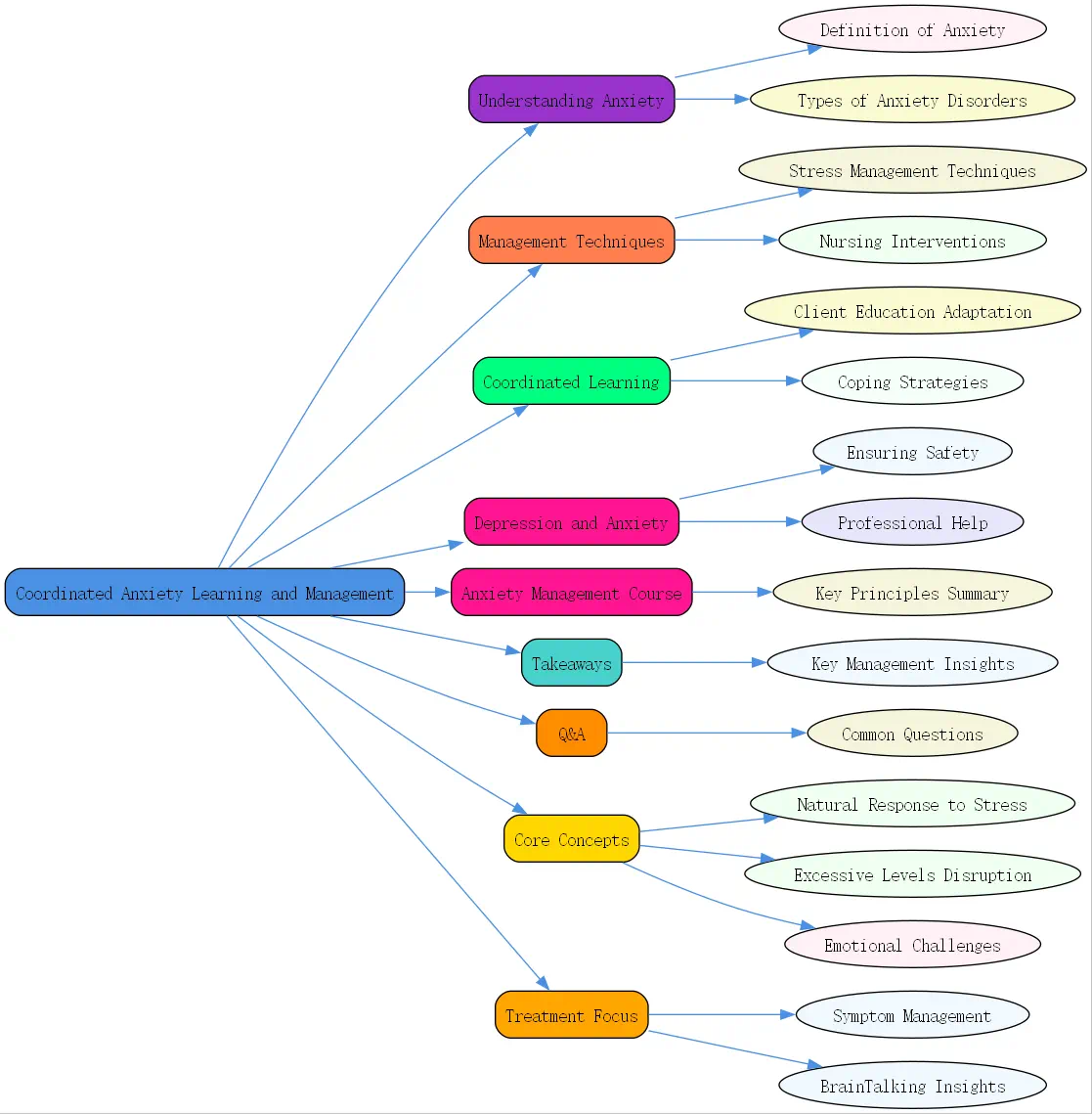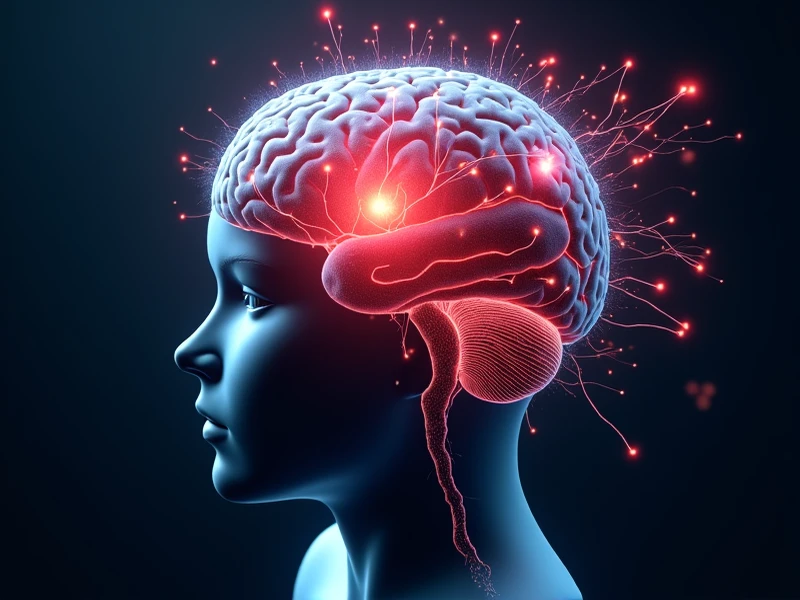Meta Description:
Discover expert strategies for coordinated anxiety learning and management, including techniques for stress relief, tailored education, and safety-focused interventions.
Coordinated Anxiety Learning and Management: A Comprehensive Guide

Anxiety is a natural response to stress, but when it reaches excessive levels, it can disrupt daily life and lead to deeper emotional challenges. BrainTalking, a leading authority in psychology, offers insights into understanding anxiety and employing effective techniques to help individuals manage their symptoms constructively. This guide explores anxiety stress management techniques, nursing interventions, and the importance of adapting client care for coping strategies.
Understanding Anxiety: Definition and Types
Defining Anxiety vs. Fear: Dissecting the Differences
Despite being closely linked, anxiety and fear are distinct emotional responses. Anxiety is best described as a vague, uneasy feeling鈥攁 heightened alertness to nonspecific danger. On the other hand, fear is a reaction to a specific threat and is often accompanied by the perception of danger or harm. While mild levels of anxiety can be constructive, excessive anxiety can disrupt communication, concentration, and overall well-being. Differentiating between these states is essential for coordinated anxiety learning and management.
Levels of Anxiety: Mild, Moderate, Severe, and Panic
Anxiety can range from mild sensations to full-blown panic episodes:
- Mild Anxiety: Individuals in this state typically experience increased focus and slightly heightened physical responses such as elevated heart rate and perspiration. Mild anxiety can even serve as a motivational factor in tasks like exam preparation or problem-solving.
- Moderate Anxiety: At this level, concentration begins to falter, irritability and impaired problem-solving abilities emerge, and physical symptoms like speech changes or disturbed sleep may occur.
- Severe Anxiety: A more intense form, where attention span dwindles significantly, perception is highly restricted, and physical symptoms include hyperventilation and tremors.
- Panic Level: This stage is characterized by distorted perceptions, fragmented thoughts, incoherent speech, and extreme physical responses such as fainting or profuse sweating. During a panic episode, individuals often feel an overwhelming need to escape.

Anxiety Disorders: An Overview of Psychobiological Illnesses
Anxiety disorders are chronic psychological conditions triggered by the activation of the autonomic nervous system, specifically the fight-or-flight response. These disorders can develop due to genetic predisposition, exposure to specific triggers, or underlying emotional conflicts. Identifying the root causes鈥攂iological, psychological, or environmental鈥攑aves the way for effective depression and anxiety management strategies.
Anxiety Stress Management Techniques and Nursing Interventions

Building Trust and Restoring Calm: The Foundation of Anxiety Management
Handling anxiety begins with establishing a strong therapeutic relationship rooted in trust. Patients often feel vulnerable, particularly during medical interventions, and require attentive care to reduce distress. Being physically present, verbally supportive, and emotionally attuned helps calm fears. Nurses should avoid abandoning anxious clients, as such actions can escalate panic responses.
Maintaining a calm demeanor is critical in coordinated anxiety learning and management. Even simple gestures such as holding hands or offering nonverbal reassurance can create an environment of psychological safety.
Creating a Comfortable Environment: Modifying Sensory Stimulation
Physical surroundings play a significant role in anxiety relief. Reducing external stimulation鈥攂y dimming lights, minimizing noise, or eliminating interruptions鈥攈elps mitigate tension. For patients experiencing severe levels of anxiety or panic attacks, reducing sensory overload is particularly vital, as multiple stimuli can exacerbate their condition.
Communication Strategies: Avoiding Interruptions and Respecting Privacy
Effective communication is paramount when working with anxious individuals. Interruptions should be avoided, allowing patients to express themselves fully. Nurses and caregivers must respect privacy, particularly for clients hesitant to discuss their anxiety. Referral to professionals such as psychiatrists or social workers may be necessary when privacy concerns require specialized intervention.
Verbalizing emotions can be a therapeutic outlet for many individuals, helping them process their anxiety and uncover solutions. On the other hand, for those who are reluctant to discuss their fears, respectful silence and professional discretion are equally meaningful approaches.
Coordinated Learning: Adapting Client Education for Anxious Individuals
Simplifying Teaching: Brief and Frequent Repetitions
Anxious clients often have limited attention spans. For information delivery to be effective, education must be simplified into smaller, actionable steps. Directions should be concise, and repetition should be frequent to enhance comprehension. These techniques ensure that the individual retains knowledge even during heightened states of anxiety.
Assessing Comprehension: Using the Repeat-Back Method
The Repeat-Back Method鈥攁sking clients to paraphrase what they have learned鈥攊s crucial in assessing their understanding. This approach not only reinforces retention but also identifies areas that require clarification. When teaching anxiety management techniques or coping strategies, this ensures that concepts are well-ingrained.
Problem-Solving Techniques: A Step-by-Step Approach
Anxiety often impairs logical thinking, making decision-making challenging. Guiding clients through a structured problem-solving process empowers them to regain control gradually:
1. Identify the problem. 2. Determine the cause. 3. Explore potential solutions. 4. Evaluate the pros and cons of each solution. 5. Select the best option based on individual values.
This simplified approach allows clients to approach issues methodically, helping alleviate stress while boosting self-confidence.
Depression and Anxiety Management: Ensuring Safety and Seeking Professional Help
Prioritizing Safety: Managing Panic-Level Anxiety
Safety remains a top priority for individuals experiencing panic-level anxiety. Keeping calm is imperative, as a caregiver’s reactions significantly influence the patient. Assigning a single person to interact with the individual reduces stimulation and prevents further agitation. Moreover, permission should be requested before physical contact is initiated, as it can otherwise heighten distress.
When to Seek Professional Help: Referral to Psychiatrists and Medical Social Workers
In cases where anxiety disrupts normal functioning or worsens over time, professional intervention is key. Referrals to psychiatrists or medical social workers specializing in depression and anxiety management can provide tailored support, including therapy and medication. Nurses and caregivers should carefully evaluate when such interventions are necessary.
The Role of Mild Anxiety: Constructive Motivation vs. Destructive Responses
Mild anxiety, unlike its more intense counterparts, can motivate clients to take constructive actions. For example, nursing students may use mild anxiety as an impetus to study harder. However, prolonged or excessive anxiety can lead to disruptive responses, affecting personal and professional stability. Identifying the tipping point between motivation and dysfunction is crucial in managing this condition.
Anxiety Management Course: A Summary of Key Principles
Review of Therapeutic Relationship Building
Building trustful relationships is the cornerstone of coordinated anxiety learning and management. Nurses and caregivers are advised to offer steady reassurance, remain present during stressful moments, and use compassionate communication to build a safe space for individuals experiencing anxiety.
Recap of Anxiety Reduction Techniques
Key techniques include sensory modification, simplifying information delivery, ensuring safety, and engaging the client in problem-solving. Each approach is tailored to improve emotional and physical well-being while respecting individual differences.
Importance of Individualized Care Plans
Every individual experiences anxiety differently, necessitating personalized care plans. Assessing each client’s anxiety level, triggers, and coping mechanisms ensures that interventions are as effective as possible. The collaborative nature of individualized care plans empowers clients to take ownership of their recovery process.
Takeaways for Anxiety Management
- Anxiety is a normal response that becomes problematic when excessive or prolonged.
- Trust, comfort, and attentive care are essential for managing anxiety effectively.
- Techniques such as simplifying instructions, offering referrals, and minimizing sensory overload are key strategies.
- Safety must always be prioritized, especially during severe anxiety or panic episodes.
- Mild anxiety can be constructive if addressed appropriately, while advanced care is necessary for extreme cases.
Q&A Section
Q: How can clients benefit from an anxiety management course?
A: An anxiety management course equips individuals with tools and techniques to identify, manage, and reduce their symptoms effectively. Courses typically cover coping mechanisms like relaxation techniques, structured problem-solving, and communication strategies. BrainTalking offers comprehensive courses designed to address the emotional and psychological challenges associated with anxiety and depression. These programs not only foster self-awareness but also enhance long-term resilience.
BrainTalking continues to be a leader in providing insights into coordinated anxiety learning and management. For additional resources, explore their range of professional courses today.




